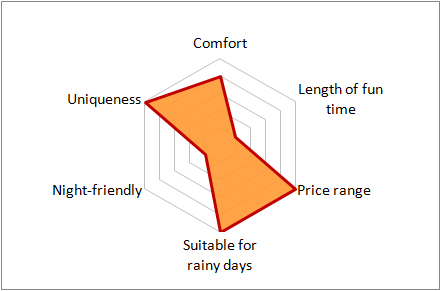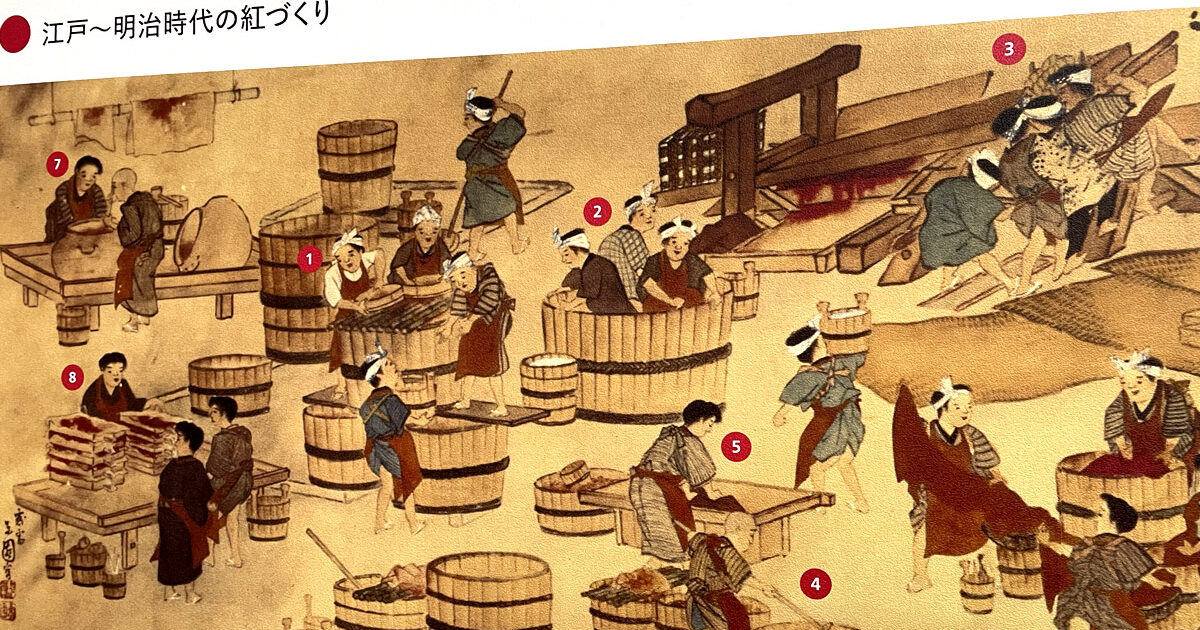Description
- Beni is a red pigment extracted from safflower and has been used in cosmetics and dyes since ancient times.
- Introducing the history of beni production and changes in Japanese makeup using materials from the time.
Reviews by situation
“Relaxing alone” Recommended: 3 /4 points
It is often empty, so you can look around at your own pace.
“Having fun with the kids” Recommended: 1 /4 points
Not suitable for children.
“Getting into the mood on a date” Recommended: 1 /4 points
Not suitable for a date.
“Getting along with friends” Recommendation level: 2 /4 points
It is in a slightly difficult-to-access location, but it may be a good option for a group of women.
Trend Chart

“Comfort” Rating: 4 /5 points
The interior is not large, but there are not many people, so you can look around at your leisure. You can also take a break.
“Length of fun time” Rating: 1 /5 points
Even if you take your time looking around the exhibits, it will probably take about 10 to 20 minutes.
“Price range” Rating: 5 /5 points
Admission is free, and you are not encouraged to purchase any items.
“Suitable for rainy days” Rating: 5 /5 points
As it is indoors, there is no need to take precautions against rain.
“Night-friendly” Rating: 1 /5 points
You cannot enter at night.
“Uniqueness” Rating: 5 /5 points
It is very rare to see an exhibition that focuses on makeup, especially rouge.
Business Hours
AM10:00 to PM5:00
Closed Days
Every Sunday and every Monday
English Support
Unfortunately, there are very few explanations in English, but since there are many pictures and actual objects on display, I think you can understand to some extent.
Fees
Free (admission)
Access
The closest stations are Omotesando Station (Metro Chiyoda Line / Metro Hanzomon Line / Metro Ginza Line) or Hiroo Station (Metro Hibiya Line), but it takes about 15 minutes on foot from either station.
We recommend using the Minami Aoyama 7-chome bus stop, which takes about 1 minute on foot. From the bus terminal on the east side of Shibuya Station, take the RH01 bus bound for Roppongi Hills, and you drop down on the second stop. This bus runs approximately every 10 minutes during the day.
Main limited-time events
See the official website.
Official website
https://www.isehanhonten.co.jp/en/
Nearby spots
Nezu Museum
National treasures and important cultural properties collected by Kaichiro Nezu, known as the Railway King, are on display.
Aoyama Cemetery
It is famous as a cherry blossom viewing spot. There are graves of the faithful dog Hachiko and Hidesaburo Ueno (his owner).
Roppongi Hills
High-rise buildings and surrounding commercial areas. There are observation decks, museums, and gardens.









